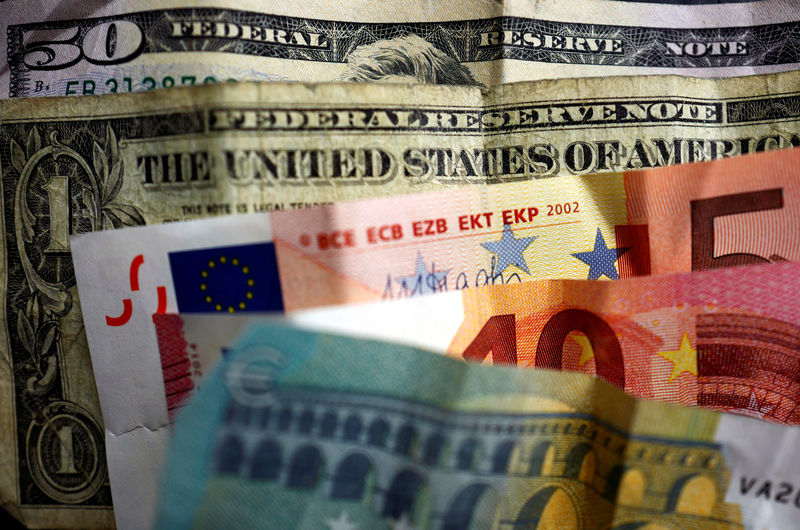Investing.com – The U.S. dollar rose in early European trading on Friday, on track for its second straight quarterly gain. The euro sank and the Japanese yen remained on intervention watch.
At 04:00 ET (09:00 GMT), the , which tracks the dollar against a basket of six other currencies, was trading 0.1% higher at 105.705, on track for a 1.5% gain for the second quarter .
Dollar gain after debate; PCE data will follow soon
The dollar is in strong demand, and this is expected to be its second straight quarterly gain, as markets have lowered their expectations for US interest rate cuts over the past six months.
The dollar index has gained just under 5% so far this year.
That said, the Federal Reserve’s preferred inflation measure, the PCE index, will be released later in the session and is expected to show that annual growth slowed to 2.6% in May.
While this would still be above the Federal Reserve’s medium-term target of 2%, it could open the way for cuts later this year.
“The market is not fully pricing in the Fed’s first rate cut until November, so there should be room for a decline in US short-term rates as the focus shifts to a rate cut in September,” ING analysts said in a note.
The dollar was also helped overnight by a disappointing performance by President Joe Biden in the first presidential debate late Thursday, raising the odds that Republican candidate Donald Trump would win the November vote.
“We see a potential Trump administration as more positive for the dollar, both through looser fiscal policy and through a more aggressive trade and tariff environment,” ING said.
Politics weighs on the euro
rose slightly to 1.2641, helped by data showing growth in the first three months of this year rose 0.7% from the previous quarter, above an initial estimate of 0.6%.
On an annual basis, gross domestic product in the first quarter was only 0.3% higher than a year earlier, above an initial estimate of 0.2%.
“Encouragingly, consumption seemed to be the biggest driver here,” ING said. “However, we still predict that the Bank of England will start cutting rates in August and signal this in speeches once the July 4 general election is over.”
fell 0.1% to 1.0695, with the euro plagued by more political uncertainty ahead of the start of the French elections this weekend.
The latest poll published in the newspaper Les Echos on Friday shows that the French far-right party National Rally has further increased its forecast and could reach as much as 37% of the vote.
“The question for the market is whether a Le Pen government will look at the French bond market and start to abandon some of its plans for apparently unfunded tax cuts – or follow through,” ING added.
Elsewhere, growth rose more than expected in June, growing by 19,000 in seasonally adjusted terms, above the expected 15,000.
USD/JPY briefly crosses 161
In Asia, it traded 0.1% higher at 160.95 after briefly breaching the 161.00 level earlier in the session.
The pair were now well above the level at which the government had intervened in May. While officials maintained their verbal warnings, the move in the USD/JPY pair suggested that no actual intervention had taken place so far.
also showed little increase in inflation. While headline inflation rose, underlying inflation remained well below the Bank of Japan’s 2% annual target.
Weak inflation pressures have raised doubts about how much room the BOJ has to tighten monetary policy – a key factor behind the yen’s recent weakness.
fell marginally to 7.2660, remaining close to the highest level since November. The focus was now on the most important data, which will be announced this weekend.


